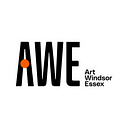How to Identify and Target the Audience for Your Digital Project
Even the most innovative and engaging digital projects are doomed to fail if they can’t attract the right audience. How can a gallery, museum, or other institution find the right audience for their project? Is it enough to simply engage existing patrons? A number of strategies can help organizations find the right audience for their digital project:
Current attendees
The current attendees of a gallery or museum are the most likely to be excited about an organization’s new initiatives. When a new project debuts, their word-of-mouth promotion is invaluable. A prudent strategy is to promote content on existing platforms where the museum or gallery already has a following. Adding a new platform may be a goal later on, but the added task of trying to attract followers can take away from the process of driving attention to the project itself. Casting a net that is “too wide” can turn into a waste of resources.
“Not yet” attendees
Potential attendees are people with the propensity or inclination to visit your museum or gallery, but have not yet done so despite good intentions or due to lack of awareness. Olivier Maurice, a producer at the digital media experience company Moment Factory, notes that it can be effective to reach beyond regular gallery-goers and connect with people who seek digital forms of cultural entertainment, such as film-goers or video gamers. Since digital media projects have crossover appeal and are relatively new (much like a new movie or video game release), they can reach this audience adjacent to regular museum visitors.
Persona building
This involves imagining different types of people as potential audience members for a project. Atlassian, the company that created Trello, prescribes a simple formula for persona-building: persona, need, and purpose. As an exercise, it looks like this: “As a [persona], I [want], [so that].” An example could be “As a grandmother with ample free time, I want something that my grandchildren and I can do together when I watch them, so that we can have fun together and bond.” In keeping the personas realistic and figuring out their needs and motivations, museums and galleries can figure out how to tap into both existing and new audiences for their projects.
Life stages
Moment Factory’s Maurice notes that ideally, digital experiences should be “universally understood”: engaging for both old and young audiences. Galleries and museums should not assume that a certain demographic has decided tech-based initiatives aren’t for them. A good digital project should not have any age-related or other barriers. To target audiences of all life stages, the project should be advertised in different ways to those audiences. It’s a good idea to highlight, perhaps through separate promotions, the features that one group would find most appealing about the project, and then highlight the features that another group might find the most appealing in another set. For example, if applicable, children would like to see that a digital project is fun to play, while adults like parents and teachers would like to see the educational elements highlighted.
Identifying and targeting the right audience, or audiences, for a digital project is best achieved using multiple overlapping methods. Even though technical and artistic production may be complete, that is only a part of the process. Audience targeting is just as important as any other step and should be approached with a creative and inclusive mindset, as multiple types of people can comprise an audience. When a digital project finds its audience, the impact will resonate not just in the museum or gallery, but in the community, too.
Written by Micaela Muldoon
